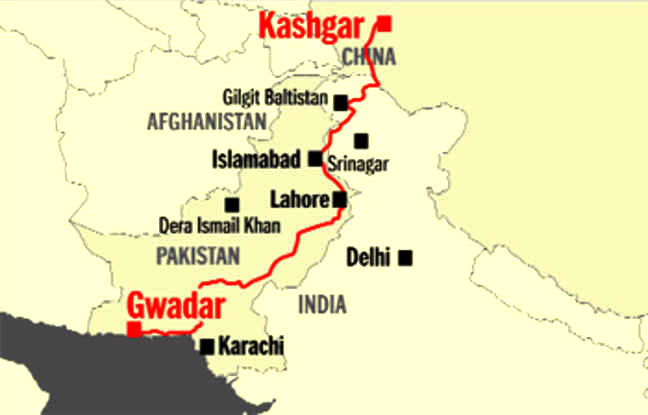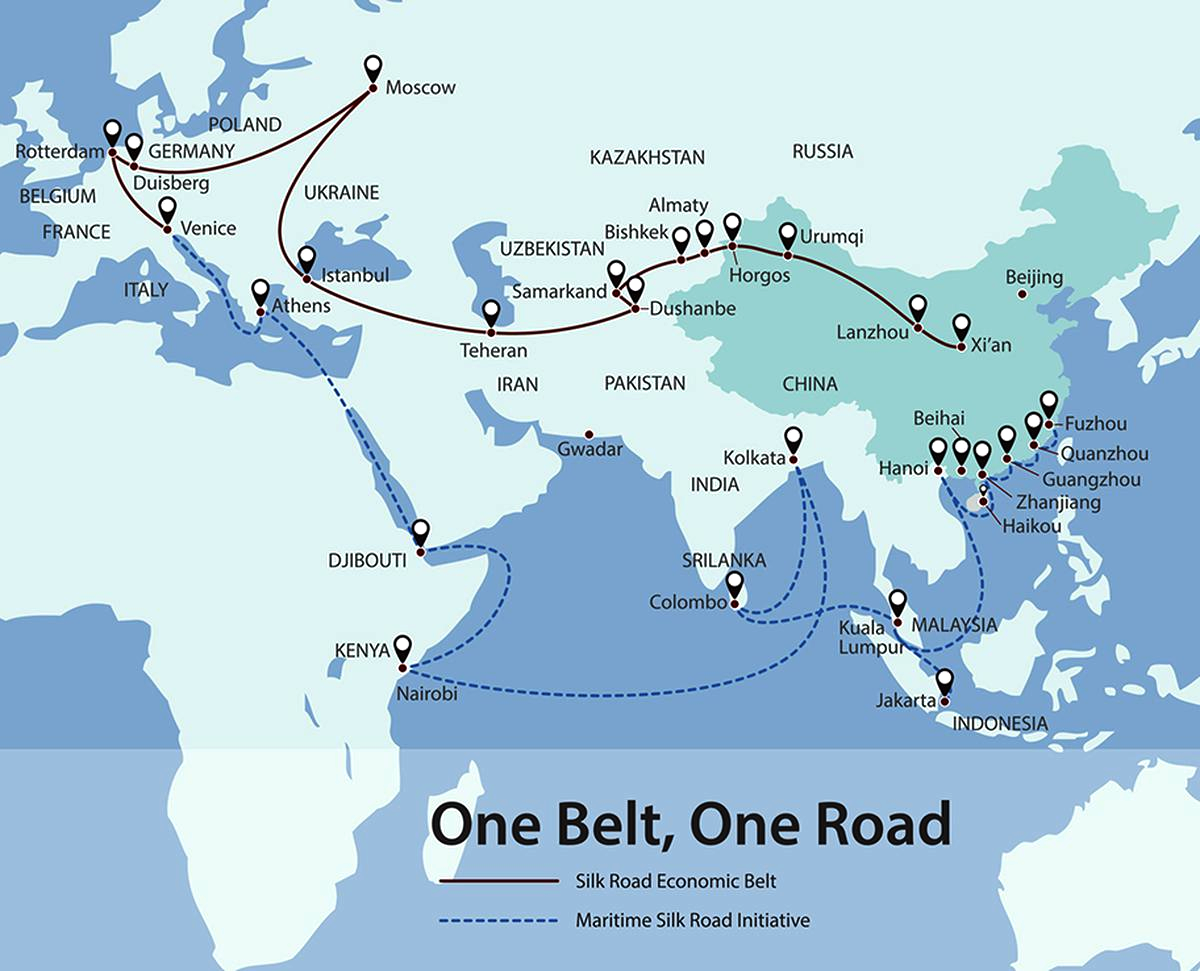International Relations
CPEC Authority
- 22 Aug 2022
- 9 min read
For Prelims: China-Pakistan Economic Corridor (CPEC), One Belt One Road (OBOR)
For Mains: China-Pakistan Economic Corridor (CPEC) and its implications on India
Why in News?
Recently, China gave nod to Pakistan's decision to scrap the China-Pakistan Economic Corridor (CPEC) Authority amid reports of growing rift between the all-weather friends over the slow pace of the USD 60 billion project.
What do we know about the CPEC Authority?
- About:
- The China-Pakistan Economic Corridor (CPEC) Authority was established through an ordinance in 2019.
- It was aimed at accelerating the pace of CPEC-related activities, finding new drivers of growth, unlocking the potential of interlinked production networks and global value chains through regional and global connectivity.
- The China-Pakistan Economic Corridor (CPEC) Authority was established through an ordinance in 2019.
- Reasons for Suspension:
- Pakistan occupied Gilgit Baltistan has been witnessing a spurt in the local protest against the Pakistan Army over land issues.
- The local population is angry at the “land grabbing” spree of the army, all in the name of CPEC.
- In April 2022, three Chinese were killed in a suicide bombing in Karachi University by Baloch Liberation Army (BLA), which opposed China's investments in Balochistan.
- China is reportedly pressing Pakistan to permit the Chinese agencies to provide security for their personnel while Islamabad is resisting as it meant boots on the ground for Chinese armed forces.
- The CPEC projects were also facing delays because of the change in taxation policies by the last government in violation of commitments given to China.
- Pakistan occupied Gilgit Baltistan has been witnessing a spurt in the local protest against the Pakistan Army over land issues.
What is the China Pakistan Economic Corridor?
- About:
- CPEC is a 3,000-km long route of infrastructure projects connecting China’s northwest Xinjiang Uygur Autonomous Region and the Gwadar Port in the western province of Balochistan in Pakistan.
- It is a bilateral project between Pakistan and China, intended to promote connectivity across Pakistan with a network of highways, railways, and pipelines accompanied by energy, industrial, and other infrastructure development projects.
- It will pave the way for China to access the Middle East and Africa from Gwadar Port, enabling China to access the Indian Ocean and in return China will support development projects in Pakistan to overcome the latter’s energy crises and stabilising its faltering economy.
- CPEC is a part of the Belt and Road Initiative.
- The BRI, launched in 2013, aims to link Southeast Asia, Central Asia, the Gulf region, Africa and Europe with a network of land and sea routes.
- Concern for India:
- India’s Sovereignty:
- India has continuously opposed the project since it passes through the Pakistan-occupied Kashmir territory of Gilgit-Baltistan – a claim opposed by Pakistan.
- The corridor is also perceived to be an alternative economic road link for the Kashmir Valley lying on the Indian side of the border.
- Chinese Control Over Trade Via Sea:
- Major US ports on the East Coast depend on the Panama Canal to trade with China.
- Once CPEC becomes fully functional, China will be in a position to offer a ‘shorter and more economical’ trade route (avoiding travel through the entire Western Hemisphere) to most North and Latin American enterprises.
- This will give China the power to dictate the terms by which the international movement of goods will take place between the Atlantic and the Pacific oceans.
- Chinese String of Pearls:
- China has been increasing its presence in the Indian Ocean with the ‘String of Pearls’ ambition: A term coined by the Americans and often used by Indian defence analysts to refer to a Chinese game-plan of encircling India through a network of airfields and ports.
- With an existing presence in Chittagong port (Bangladesh), Hambantota port (Sri Lanka), Port Sudan (Sudan), Maldives, Somalia and Seychelles, a control of Gwadar port establishes complete dominance of the Indian ocean by the Communist nation.
- Stronger BRI and Chinese Dominance in Trade Leadership:
- China’s BRI project that focuses on the trade connectivity between China and the rest of Eurasia through a network of ports, roads and railways has been often seen as China’s plan to dominate the region politically.
- CPEC is one giant step in the same direction.
- China’s BRI project that focuses on the trade connectivity between China and the rest of Eurasia through a network of ports, roads and railways has been often seen as China’s plan to dominate the region politically.
- India’s Sovereignty:
What is One Belt One Road (OBOR)?
- About:
- One Belt One Road is a multi-billion-dollar initiative launched in 2013.
- It aims to link Southeast Asia, Central Asia, the Gulf region, Africa and Europe with a network of land and sea routes.
- It has been launched to undertake big infrastructure projects in the world which in turn would also enhance the global influence of China.
- Structure:
- It contain the following six economic corridors:
- The New Eurasian Land Bridge
- The China-Mongolia-Russia Corridor
- The China-Central Asia-West Asia Corridor
- The China-Indochina Peninsula Corridor
- The China-Pakistan Corridor
- The Bangladesh-China-India-Myanmar Corridor
- Additionally, the maritime Silk Road connects coastal China to the Mediterranean via Singapore-Malaysia, the Indian Ocean, the Arabian Sea, and the Strait of Hormuz.
- It contain the following six economic corridors:
UPSC Civil Services Examination Previous Year Question (PYQ)
Prelims
Q. Belt and Road Initiative’ is sometimes mentioned in the news in the context of the affairs of (2016)
(a) African Union
(b) Brazil
(c) European Union
(d) China
Ans: (d)
Exp:
- Proposed in 2013, the ‘Belt and Road Initiative (BRI)’ is an ambitious programme of China for connecting Asia with Africa and Europe via land and maritime networks.
- The BRI comprises a Silk Road Economic Belt – a trans-continental passage that links China with Southeast Asia, South Asia, Central Asia, Russia and Europe by land – and a 21st century Maritime Silk Road, a sea route connecting China’s coastal regions with Southeast and South Asia, South Pacific, Middle East and Eastern Africa, all the way to Europe. Therefore, option (d) is the correct answer.
Mains
Q. The China-Pakistan Economic Corridor (CPEC) is viewed as a cardinal subset of China’s larger ‘One Belt One Road’ initiative. Give a brief description of CPEC and enumerate the reasons why India has distanced itself from the same. (2018)
Q. China and Pakistan have entered into an agreement for the development of an economic corridor. What threat does this pose for India’s security? Critically examine. (2014)
Q. “China is using its economic relations and positive trade surplus as tools to develop potential military power status in Asia”. In the light of this statement, discuss its impact on India as her neighbour. (2017)






